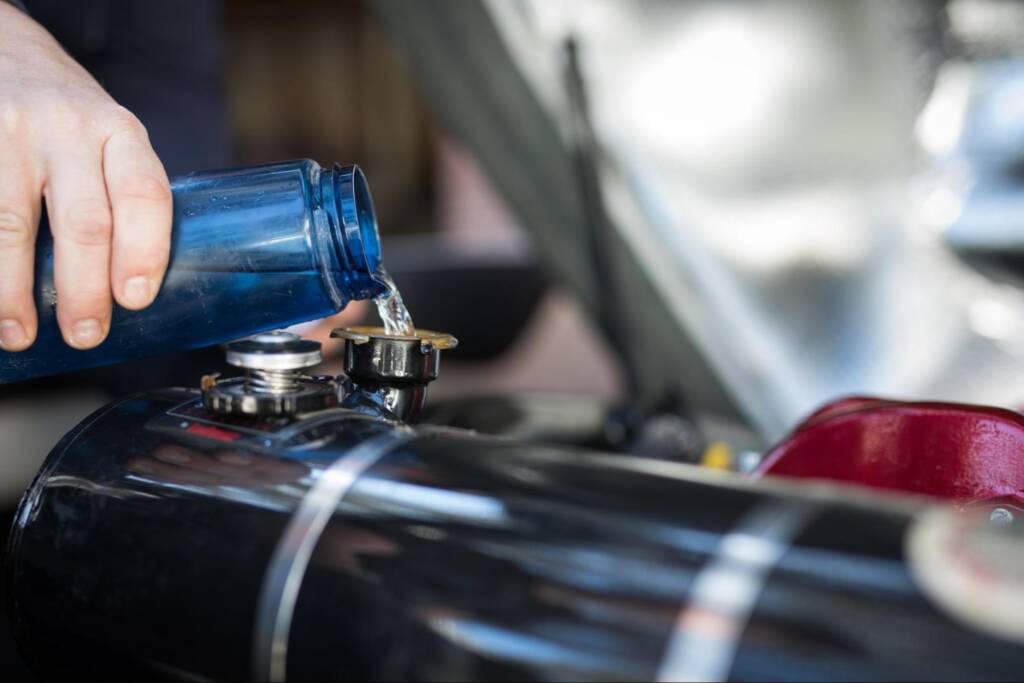A rough idle, lagging acceleration, and poor gas mileage aren’t just annoying; they can also be a sign of a serious issue. They often hint at deeper issues inside your engine. One overlooked culprit is carbon buildup in the fuel system. It silently affects performance and slowly drains your wallet. Knowing what you’re paying for during a fuel induction service helps you decide when it’s worth the cost.
What is a Fuel Induction Service?
A fuel induction service clears carbon and residue in the intake valves, throttle body, and combustion chamber. Over time, deposits build up due to modern fuel compositions and combustion methods. These buildups clog vital components and interrupt airflow, leading to rough starts and reduced power. This service keeps your engine running clean and smooth by restoring airflow balance.
How the System Works
Your vehicle’s engine burns a mix of fuel and air. When deposits form on valves or intake parts, that mix gets disrupted. The result is uneven combustion, which leads to hesitation, knocking, or misfiring. Newer direct-injection engines are particularly susceptible to these deposits. They spray fuel directly into the combustion chamber, bypassing the intake valves where gunk accumulates more quickly.
What the Service Includes
The process usually involves three steps: throttle body cleaning, intake valve treatment, and fuel rail flushing. Technicians use specialized tools and solvents to break down carbon without damaging parts. This service isn’t a simple fuel additive; it’s a hands-on cleaning of internal engine components. Some shops also include an inspection of sensors and air passages. These extras can slightly raise the price but improve the result.
Fuel Induction vs. Fuel Injector Cleaning
Many people confuse fuel induction service with injector cleaning. Fuel injector cleaning targets clogged nozzles inside the fuel injectors themselves. In contrast, fuel induction cleans the air intake system and valves. Both impact performance, but they fix different issues. Depending on your symptoms, one might be more useful than the other.
Fuel Induction Service Cost Factors
Several factors influence the cost of this service. It’s not a flat fee across all vehicles or shops. Costs vary based on your car’s design, labor requirements, and the services included in the package. Understanding these differences helps you recognize fair pricing:
Type of Vehicle
Some engines require more effort to access and clean properly. Due to their complex designs, turbocharged engines, and the high demand for luxury vehicles and performance cars, these vehicles often cost more. Direct injection systems also increase the labor involved. On the other hand, smaller or older vehicles may take less time to service. Your car’s make and model often determine the baseline price.
Labor Charges
Labor is often the most expensive part of this service. Rates vary widely depending on location, shop type, and technician experience. Dealerships tend to charge more because their techs specialize in specific brands. Independent mechanics usually offer lower rates, but quality still matters. Always ask how long the service takes and what labor is included.
Service Package Inclusions
Some shops combine induction service with other maintenance. They may include fuel filter replacement, spark plug replacement, or engine diagnostics. Bundling can affect the total cost and offer more value when done correctly. However, not all bundled items are necessary at the same time. Be cautious of inflated bundles that don’t meet your car’s specific needs.

Location and Shop Reputation
Where you get the service also influences the cost. Shops in urban areas with higher rent often charge more than those in smaller towns. Well-rated shops with strong reputations might be slightly more expensive. However, their consistency and quality make them a safer choice. Pricing also reflects equipment quality and technician skill.
Average Fuel Induction Service Cost Nationwide
Prices range depending on where and how you get the service. While averages help set expectations, your actual cost may exceed these numbers. Still, knowing national trends can prepare you for what to budget. Here’s what you can expect from different service providers:
Dealership Pricing
Dealerships charge between $150 and $300 for a fuel induction service. Their higher rates reflect the use of brand-specific tools and OEM-approved methods. Some drivers prefer dealerships due to warranty alignment and trust in certified techs. However, you’re often paying more for branding and facilities. This route may make more sense if your car is still under warranty.
Independent Shop Pricing
Independent garages typically charge less, ranging from $100 to $200. These shops often use the same tools and solvents as dealerships. You might not get fancy waiting rooms, but the core service can be just as good. Always ask if the shop uses quality products or generic cleaners. Pricing also depends on the shop’s hourly labor rate.
DIY vs. Professional Cost Comparison
DIY kits start at $25 and can climb to $60. These kits promise to remove deposits using spray cans or pour-in additives. However, results vary, and mistakes can damage engine components. Most at-home tools don’t reach all affected areas, especially valves. In many cases, hiring a professional prevents more extensive repair bills later.
When Do You Need a Fuel Induction Service?
Not every car needs this service regularly. Some drivers never need it, while others benefit every 30,000 miles. It depends on how you drive, your engine type, and the early signs of trouble. Paying attention helps you time the service to maximize its impact.
Signs of Carbon Buildup
If your car hesitates during acceleration or idles roughly, carbon might be the reason. You might also hear knocking or notice a drop in fuel efficiency. Sluggish response when pressing the gas pedal is another clue. Ignoring these signs lets problems build over time. Eventually, that could lead to misfires or costly repairs.
Mileage and Driving Habits
Some carmakers recommend fuel induction every 30,000 to 60,000 miles. However, if you drive short trips or idle often, the buildup occurs faster. Highway driving, in contrast, maintains strong airflow and reduces residue. Review your manual and consider how your habits affect engine wear. Routine doesn’t mean required. Let your vehicle’s performance guide your decision.
Manufacturer Recommendations
Not all brands support fuel induction as routine maintenance. Some recommend it only when symptoms appear, while others encourage it at specific intervals based on engine design. Trust your car’s service schedule and ask your mechanic about your engine’s tendencies. Some engines are known to carbon up faster than others.

What Does the Fuel Induction Service Cost Cover?
The fuel induction service cost isn’t just about cleaning parts. You also cover equipment use, materials, technician labor, and post-service checks. These costs add up, and they also explain why prices can vary so much.
Equipment and Materials
Shops use specialized tools that spray or inject solvents into specific engine areas. These tools must be precise to prevent damage to parts. The chemicals aren’t generic cleaners; they’re engineered for carbon breakdown. Some shops use vehicle-specific formulas for direct-injection engines. Quality materials improve results and last longer.
Technician Skill and Labor
Cleaning a throttle body or intake system requires finesse. If done wrong, it can trigger engine lights or cause damage. Trained technicians know how to apply the solvent without affecting sensors or electronics. You’re also paying for experience and safety. Skilled labor may cost more, but it lowers the risk of rework.
Diagnostic Add-Ons
Many shops include engine scans before and after the service. These checks help verify the cause of the symptoms and track improvements. Diagnostics require scan tools and time, which adds to the price. However, they offer peace of mind and prevent unnecessary repairs. Some shops even provide printed reports for your records.
Long-Term Value
Clean engines perform more efficiently and use less fuel. Restoring airflow reduces engine strain, especially in older cars. You may notice smoother acceleration and quicker throttle response. Over time, this reduces wear on costly components, such as spark plugs and oxygen sensors. The initial cost brings benefits that stretch over thousands of miles.
Avoiding Overcharges on Fuel Induction Services
Some drivers overpay because they don’t know what to look for, and others are pressured into extra services they don’t need. Being prepared helps you protect your wallet and your engine. These practical tips make you a smarter customer.
How to Read the Quote
Your estimate should list parts, labor, and procedures. Watch for vague items, such as “engine treatment,” without specific details. Ask what each line means if it’s unclear. If multiple services are bundled together, request separate prices for each service. That will help you compare quotes more easily.
Smart Questions to Ask the Shop
Before you approve the service, ask a few direct questions. “Do I really need this now?” is a good start. Then ask, “What does the service include?” Also, check, “Is this part of regular maintenance, or just a recommendation?” Shops that answer confidently and transparently usually deserve your trust. If they hesitate or dodge, consider using an alternative mechanic.
Choosing the Right Mechanic
Reputation matters more than flashy marketing. Check online reviews and look for certification logos on the shop’s website. Ask friends or family where they go. Shops that educate you rather than upsell are often more reliable. A fair mechanic wants long-term customers, not quick profits.
Get Ahead of Fuel Induction Problems Before Costs Climb
Carbon buildup isn’t dramatic at first, but it builds silently. If you wait too long, it compromises performance and increases repair costs. A reasonably priced fuel induction service now prevents larger repairs down the road. You don’t need to rush, but you do need to pay attention.
Keep your car’s performance sharp. Explore the Dark Night Specialties blog for straight answers and expert guidance.


